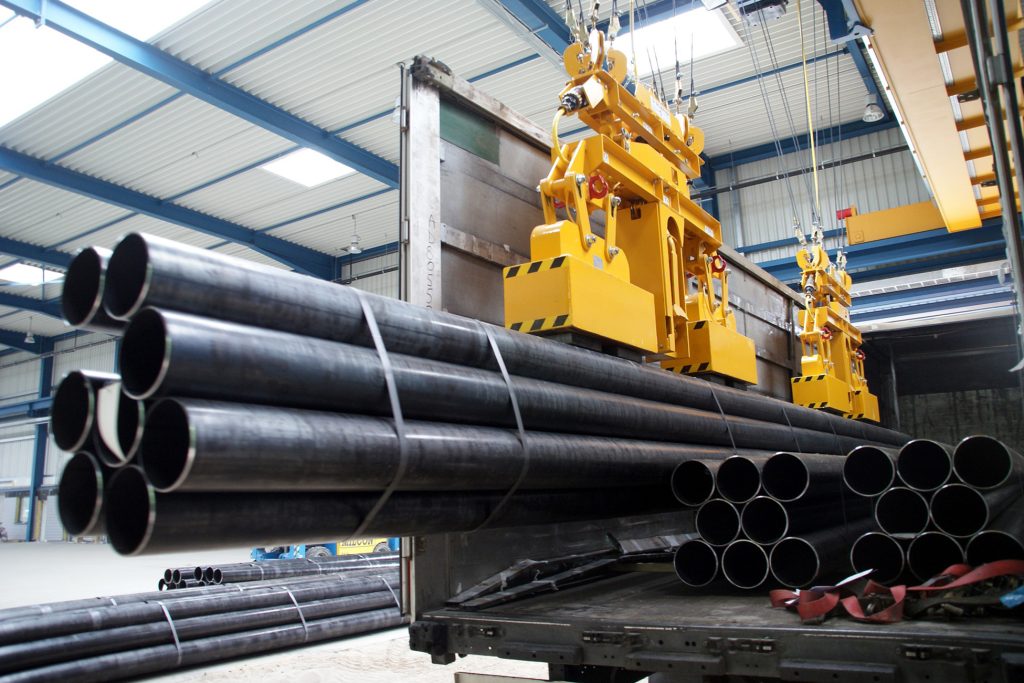Interaction Between Cranes and Operators:
Major Dangers and How to Avoid Them
As promised in the previous article, this material continues the description of reasons that can generate major dangers when operating overhead cranes and, in general, all types of cranes. Given the great diversity of users who employ lifting systems and machines, as well as the very wide range of models adapted and perfected for different applications, over time, it was decided to impose and adopt – even internationally – a set of safety measures that must be strictly observed to avoid dangerous situations. We all know that the simplest solution for preventing incidents is recognizing their sources, so that operators and those interacting with these systems can better understand how to foresee and avoid them.
Thus, today we try to better understand the sources from which material falls can occur, as we know these can cause significant injuries or even fatalities:
a.) Lack of Visibility. Studies show that one of the reasons for material falls is operating machinery even in the absence of perfect visibility for the operator. Thus, when the operator does not have a perfectly clear visual field over the load, they must be assisted by observers placed in such a way that they can observe the maneuvers and quickly transmit commands to the operator.

b.) Improper Rigging or Using Non-Compliant Materials for the Load is another major cause leading to material falls. To avoid these situations, personnel must be continuously trained, and lifting systems must be checked periodically to prevent defects. Thus, all safety components of an overhead crane or crane must be in perfect working order and meet the technical conditions provided by occupational safety regulations and the specific operating instructions for the model used.
c.) Mechanical Failure of Components. Such equipment malfunctions can occur in loading devices, securing slings or chains, or even in the lifting cable. Usually, these malfunctions can be prevented by periodic technical controls and frequent checks, including every time the lifting equipment is put back into operation, even daily if necessary and if this is stipulated by the operating instructions of the model used.
d.) Insufficient Operator Training can lead to a series of situations that cause the transported load to fall and lead to workplace accidents, which could otherwise be avoided. Insufficient knowledge of safety norms and their non-observance can result in operating equipment under unsafe conditions, not establishing or only partially establishing a safety perimeter, moving insufficiently secured and rigged loads, dangerous movement of the load and their overturning, hitting obstacles or even people, etc.
As we can observe, most, if not all, of these causes can be avoided through careful operation of the overhead crane or crane, and as a primary necessity, we see the hiring of well-trained and qualified crane operators. Thus, it becomes clear that for all overhead crane or crane operators, understanding these causes that can lead to material falls requires complete and thorough training with authorized institutions and with the manufacturers of the cranes and overhead cranes used. Such training is even more useful given that in recent years, new technologies have allowed the installation of safety systems that monitor and control these types of errors, warning the operator or even blocking the machinery if the command risks endangering the load and the operator, or if it risks damaging important components of the crane. However, these control and lockout devices, in case of danger, also require periodic checks, which must be performed by qualified personnel, so that they can continue to function correctly, ensuring the safety of those who work with such lifting systems.
Our company, LIFSOR Lifting Machines SRL, provides these types of checks as well as a training regimen that includes knowledge about the principles of load handling and lifting capacities for each type of machinery in different operating modes and conditions.
Insufficient operator training can lead to a series of situations that cause the transported load to fall and workplace accidents, which could otherwise be avoided.
(To be continued…)


